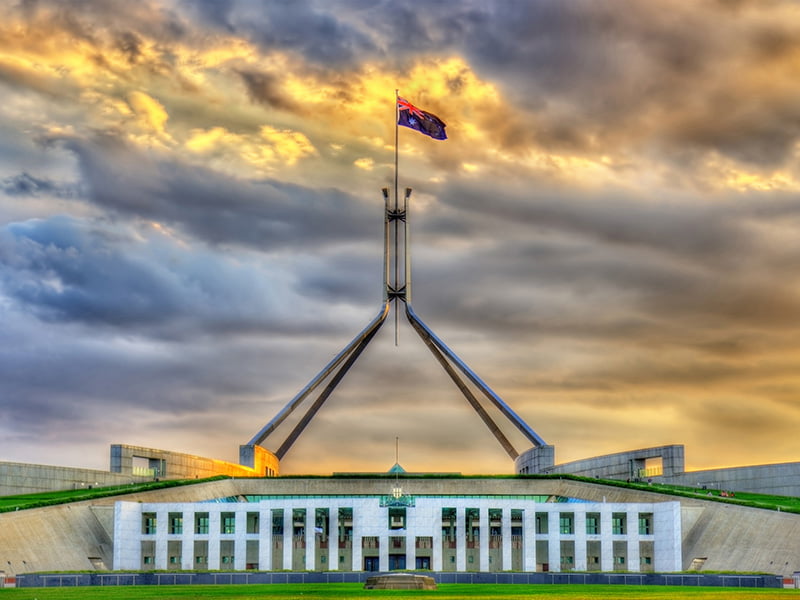The David Thodey-led myGov user audit is a glass half full review of a system that has struggled for a decade to get even close to its potential for delivering better, faster, cheaper government services.
The three-month review, ordered by Government Services Minister Bill Shorten last September, has put forward recommendations for a new governance regime to address three systemic issues that have for years, undermined the delivery of high-quality, citizen-centric services.

The review committee included former Human Rights Commissioner Edward Santow; former head of economic policy at Uber Amit Singh, who was also an economics adviser to the Prime Minister in the previous Labor government; eSafety Commissioner Julie Inman-Grant; and social epidemiologist Professor Emily Banks.
The committee should be applauded for the report that has been produced. It is a sweet relief that it did not simply roll the challenges in glitter. This audit has dealt with the messy governance structures that have stymied progress at the federal level.
The audit acknowledges where progress has been made in the past several years, but is frank about the underlying structural problems.
“The improvements needed for myGov to fulfil its potential are clear. It is also clear that we’ve been here before and fallen short,” the audit report says flatly.
“The promise of myGov has been promoted by government many times. The failure has not been in articulating myGov’s promise. It has been a failure to address underlying issues.”
The potential upside is well known. Australians are sick of hearing it. The problem is delivery.
The three systems issues:
First, the structures and responsibilities of government do not encourage agencies to join up services for Australians. While ministers and departments and agencies focus on the designing services for citizens in relation to their own portfolios, there is no-one responsible for or prioritises the overall experience of Australians dealing with government as a whole.
Secondly, myGov has been funded, planned and governed as a standard IT project, instead of as an essential piece of national infrastructure. Short-term opportunistic funding by successive governments has not and will not meet the future digital service needs of Australia. It needs long-term planning and committed funding.
And thirdly, ‘fixing’ myGov – which has been promised since the birth of the original Digital Transformation Office in early 2015 – means fixing things beyond myGov, including the broader quality of government digital, telephone and face-to-face service. Better services lead to increased trust in government is the key take-away here.
The committee proposes that government introduce new governance and operational arrangements by the middle of this year to drive citizen-centric service outcomes and to overcome government siloes.
The arrangements are aimed at getting different ministerial offices talking to each other, getting different agencies talking to each other, and to put in place an independent advisory board (of government and non-government members) to provide ministerial advice as well as governance and assurance myGov against its formal and measurable commitments to citizens.
The committee also proposes a separate design authority to prioritise new capabilities and services, and to govern the use and application of its design system to ensure a consistent architecture and experience across the services offered through myGov.
It proposed a myGov Policy Owner, accountable for the overall myGov product and ecosystem to sit separately from a myGov Delivery Owner, responsible for the delivery and operation of the platform.
And it has recommended legislation to add weight to governance and resourcing.
It will be interesting to see how government responds to this review. The timetable for its recommendations are quite ambitious. It clearly needs to be addressed in the May federal Budget as current funding for the myGov program ends on June 30.
The review committee has been non-prescriptive about where the component parts of its governance structure sit within government.
The audit is still being considered. Government has not yet formally responded to its recommendations.
Government Services Minister Bill Shorten says he does not envisage major Machinery of Government changes would be required to get the outcomes envisaged by the committee.
But that will remain a live question between now and Treasurer Jim Chalmers’ second Budget.
There is an ambitious program of work to be started by this government on myGov and the improvement of government digital services if it chooses to take it up.
Or we can have more of the same.
Do you know more? Contact James Riley via Email.


More of the same thanks. Anything that produces a single, unique identifier that “joins up” everything from birth to death, from cradle to grave, from fertilisation to decomposition is a threat to a healthy relationship between citizen and state. The state is created by citizens and exists to serve their purposes. The state does not exist to track, surveille, “authorise”, collect, collate, watch, spy, snoop, pry, scrutinise, inspect, amass, stockpile, record, misuse, sell and monetise citizens. A single, unique identifier for each citizen enables all these. Thanks, but politely, no thanks.